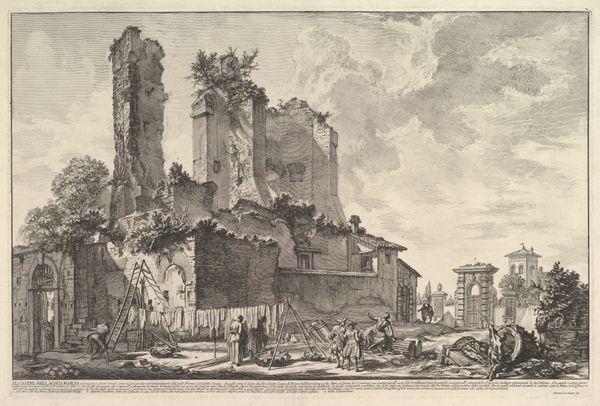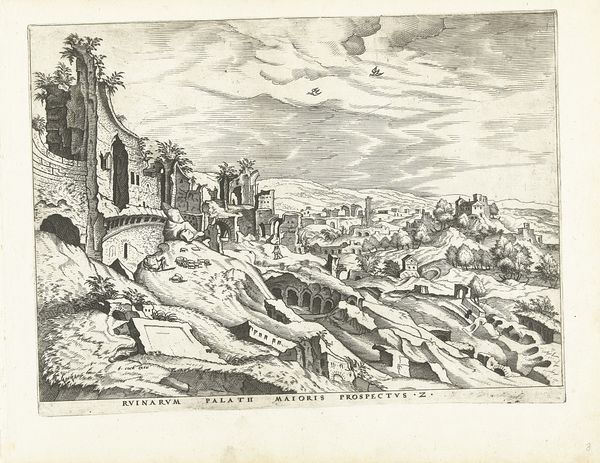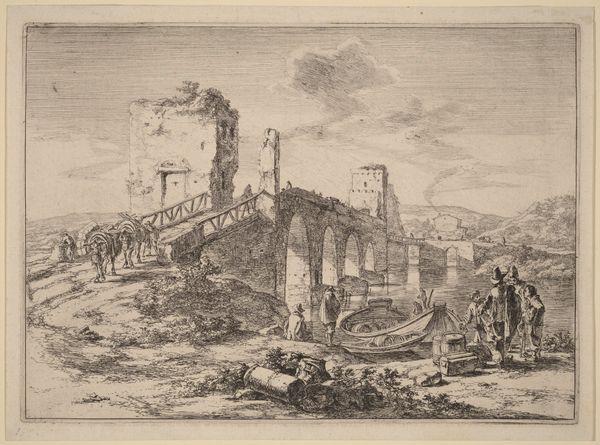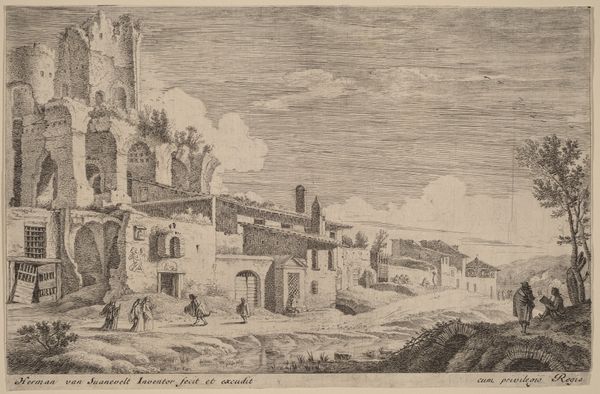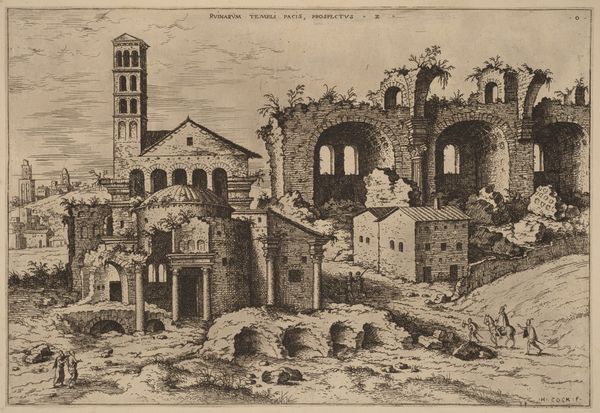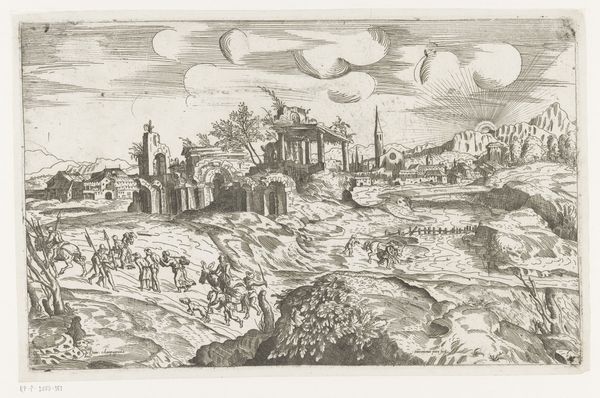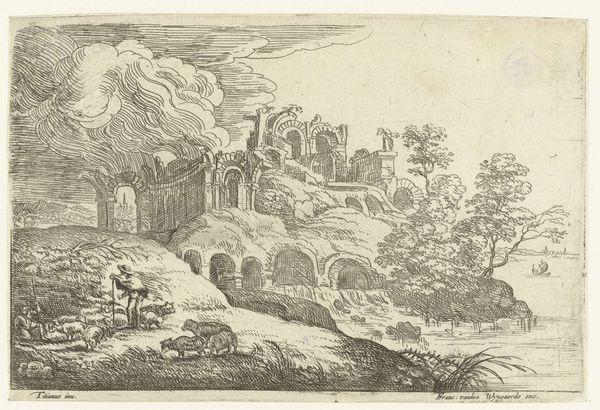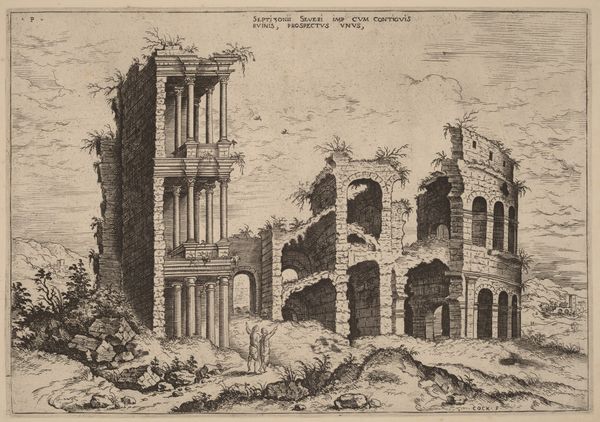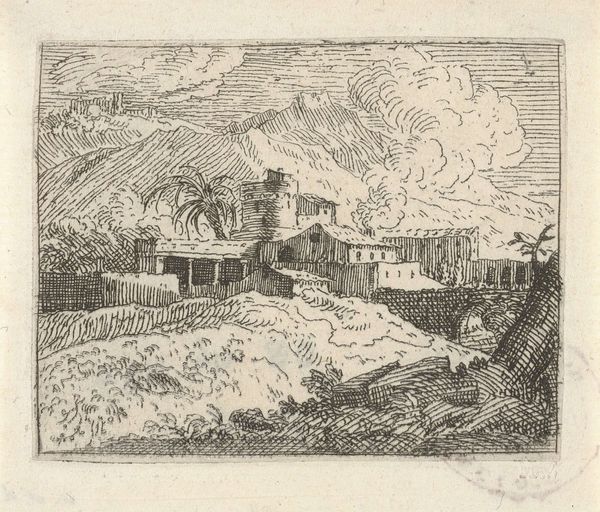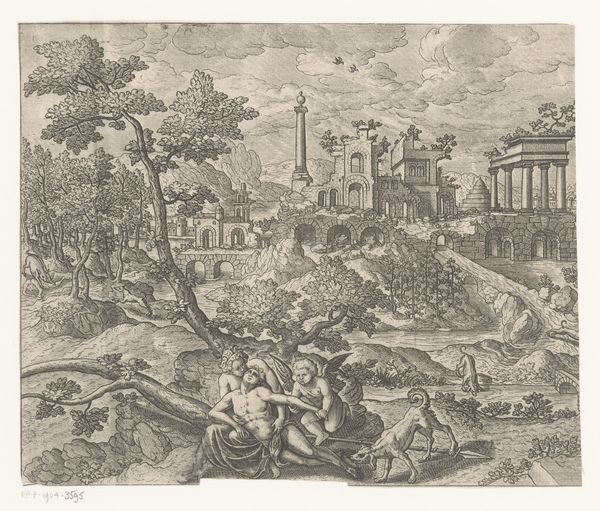
drawing, print, intaglio, paper, engraving
#
drawing
#
baroque
# print
#
intaglio
#
old engraving style
#
landscape
#
paper
#
line
#
cityscape
#
engraving
#
realism
Dimensions: height 109 mm, width 138 mm
Copyright: Rijks Museum: Open Domain
Editor: This is Govert van der Leeuw's "Heuvellandschap met gezicht op een stad," a landscape cityscape from sometime between 1655 and 1688. It's a black-and-white print, an engraving done in intaglio. It feels almost documentary, but with a clear artistic hand. What do you notice when you look at this piece? Curator: I'm drawn to the labor inherent in the intaglio process. Think about the craftsman meticulously carving those lines into the metal plate. Each one represents a physical action, a deliberate mark contributing to the final image and its circulation. How does this contrast with the landscape itself? Editor: Well, the landscape depicts labor too, doesn't it? There are grazing animals, someone tending them, and buildings which, obviously, took effort to construct. The act of making the print mirrors the work involved in building a society, in a way. Curator: Precisely. And consider the distribution of this print. It's not a unique object; it can be reproduced. This democratizes access to the image, unlike an oil painting destined for a wealthy patron's collection. So how does that affect our understanding of its value or function? Editor: I guess it means more people could experience this scene, contemplate the landscape and cityscape, but at a potentially lower cost. Is it devaluing art, or making it more accessible? Curator: Perhaps both. It complicates our understanding of the art market and who gets to participate in the visual culture. Is this just documentation, or is the craft a form of aesthetic production too? Editor: I never really thought about it that way. Focusing on the actual making changes my whole perspective. Thanks! Curator: And that shift, understanding the process, is what gives the piece renewed meaning today.
Comments
No comments
Be the first to comment and join the conversation on the ultimate creative platform.

